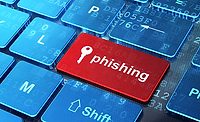The last decade has seen tremendous growth in the field of remote communications and access in the energy sector. Before almost everything became connected digitally, technicians and operators had to physically be on site to manage control systems and make adjustments. This is no longer the case.
With this new freedom comes new vulnerabilities. The United States’ complex electrical grid is relied upon to generate and deliver power to businesses and residences throughout the country. End users rarely consider what a massive undertaking is required to provide the electricity they have come to expect. However, criminal actors looking to disrupt this system are constantly looking for new ways to do so.
Just like buildings are physically strengthened to keep out individuals with malicious intent, we must now consider how to fortify our interests amidst the ever-changing digital landscape and the rise of cybercrime. As the technology we use to conduct business changes, so do the methods of criminals.
There are five main areas that should be focused on when considering cybersecurity:
- Physical access
- Remote control access compromises
- Viruses
- Business Server compromises
- Release of sensitive information
Back when threats were only of a physical nature, power plants created and conducted drills to prepare. While a physical attack is still a concern, we must now also consider a digital protection system. Because of the rapid rate of development in this sector, it is imperative that power plant technicians understand both the physical and digital threats they may face. As we see technology change, we must ask what the potential exploits are at every step.
While remote access has certainly improved plant operations, the increase in vulnerability cannot be ignored. The more remote-control access that a facility has decreases the number of individuals required to be on site. It has become standard that the plant has remote monitoring from both its Transmission Operator as well as its Scheduling Coordinator. This has helped create a more monitored and predictive grid compared to a mere decade ago, but this has also created a lot of potential access points that were not of concern in years prior.
For instance, locations specializing in solar or at peaking power plants — which require fewer employees to report in person — frequently use remote operation tools. This opens the door to hacking and information exploitation that must be monitored and mitigated. Operations that rely on remote technology must be even more aggressive with firewalls and monitoring and identification of unauthorized access attempts. While security incidents at power plants do not occur very often, but this cannot be an excuse for complacency.
Though the business server is typically separate from the control system server, this is still an area of concern. Should the business server be compromised, the company’s files and sensitive information may be at risk. Breeches of this kind cause panic, stress and distrust among plant and company employees. Such an event may affect employee performance and could negatively affect the reliability of plant operations.
The best defense against security threats is to be proactive. Educate employees and run drills focused on what an unauthorized access attempt looks like. Then, provide tools and training to counter or completely stop malicious attacks. For some companies, this means dispensing with the “this is how we’ve always done it” mentality. Standard operating procedures must be examined and questioned to determine if they are doing enough to protect your facility.
Acting too late on cyber security at your plant can be detrimental not only to that facility, but also the Bulk Electric System as a whole. Facility management should ask:
- What are the risks?
- What software or firewalls can help mitigate these risks?
- How can we educate our employees, so they understand potential threats?
- What drills can we run to ensure our employees are prepared?
The Bulk Electric System in the United States it is an obvious target for those wishing to cause large-scale disruption and harm. Plant management need not live in fear nor feel vulnerable. Armed with knowledge, companies should seize every opportunity to prepare and understand new cybercrime prevention technology. Motivated managers can optimize these advances for the country’s benefit instead of passively hoping to avoid an attack by criminals.
The future of power in American is exciting. Advocating for education and innovation in the field of cybersecurity will help make sure we meet the future safely and securely.




